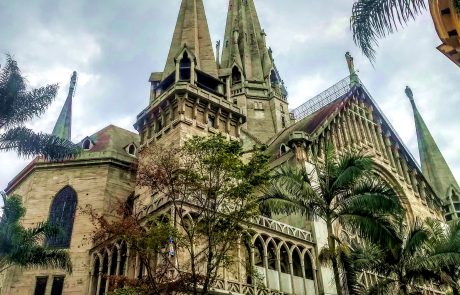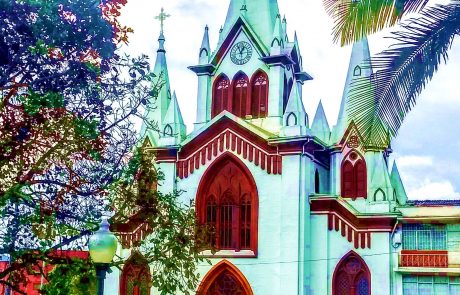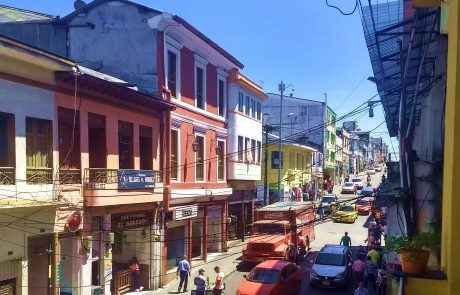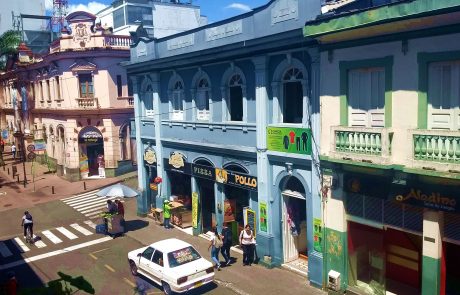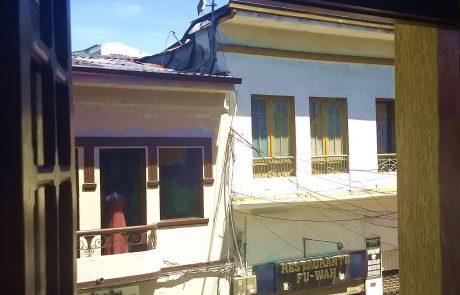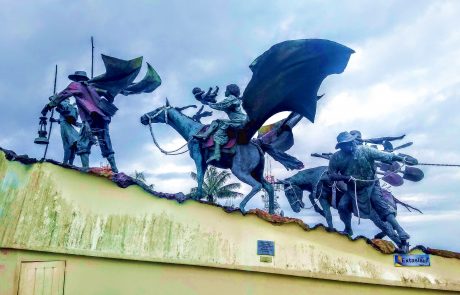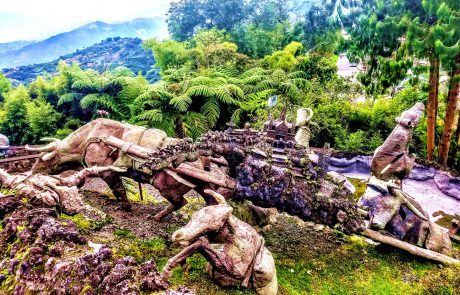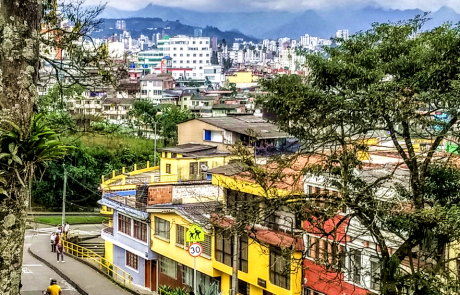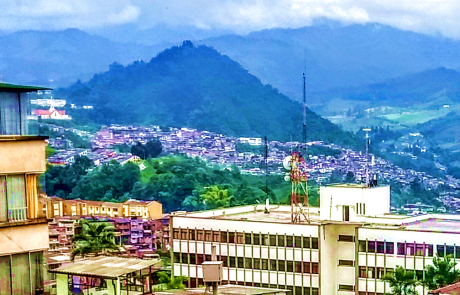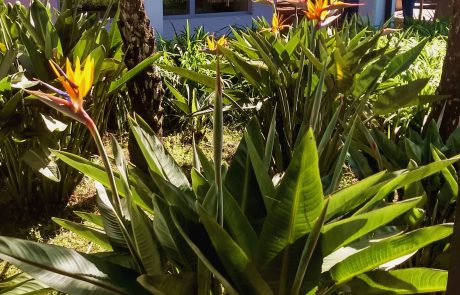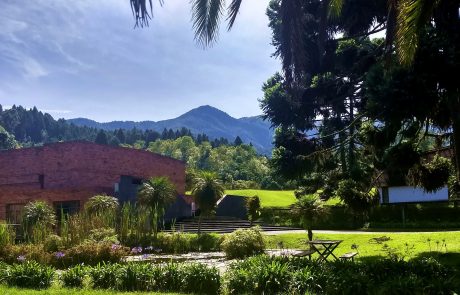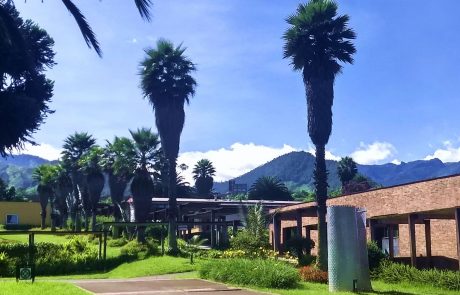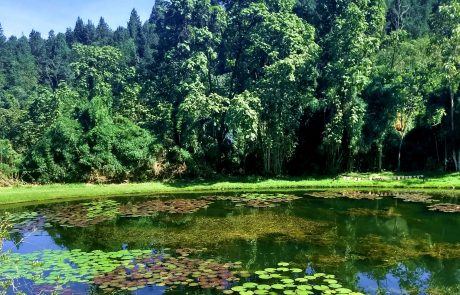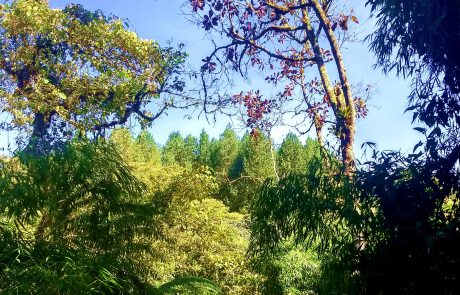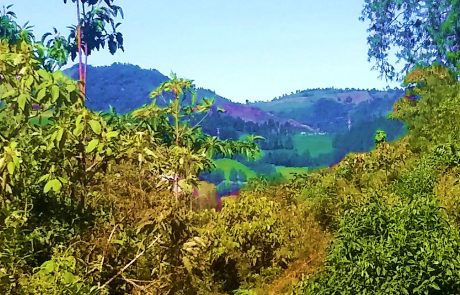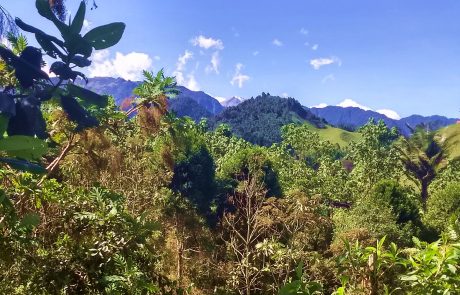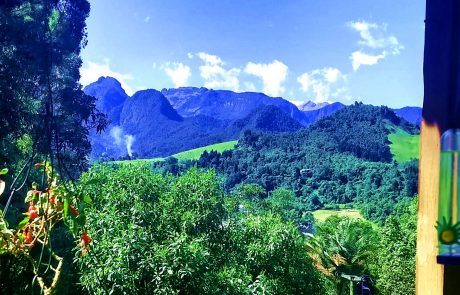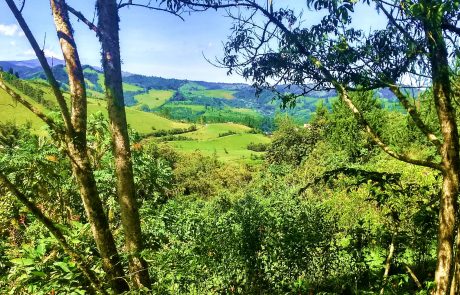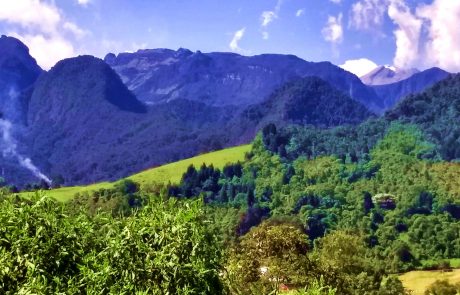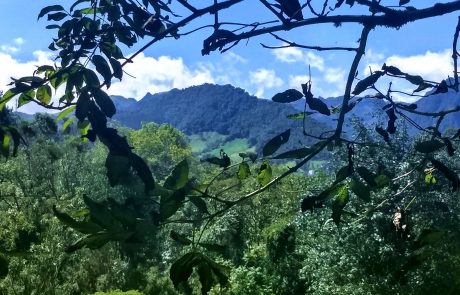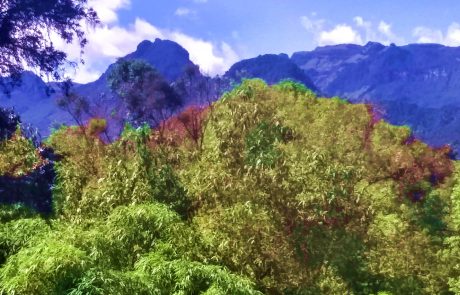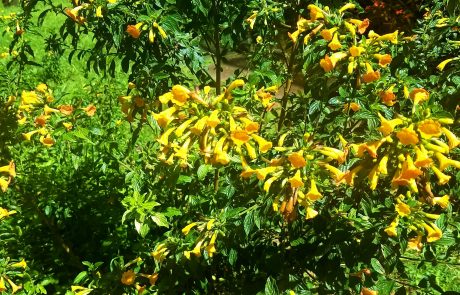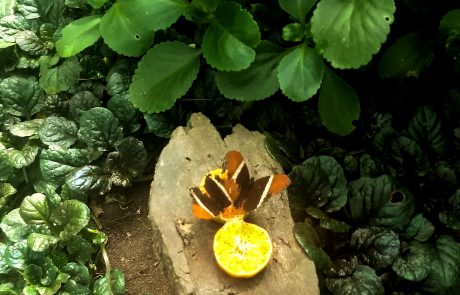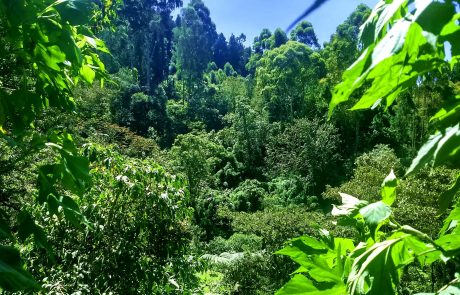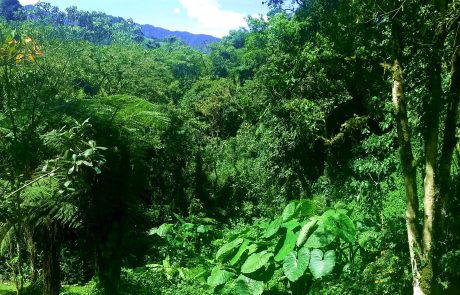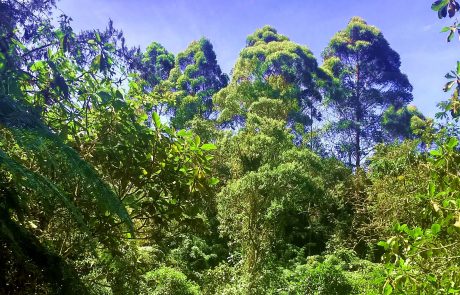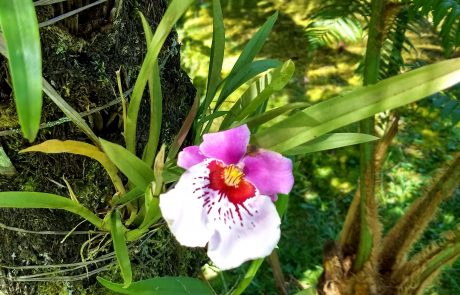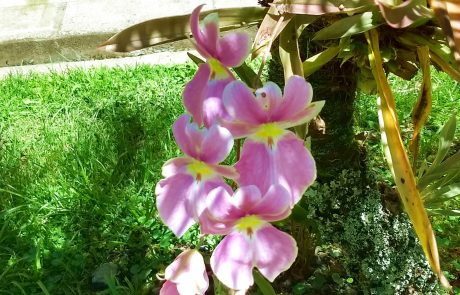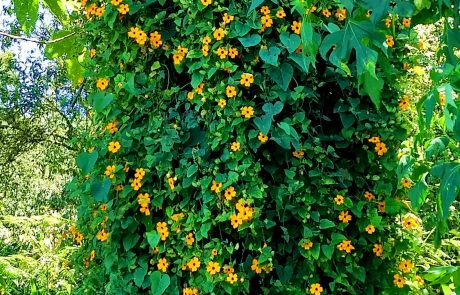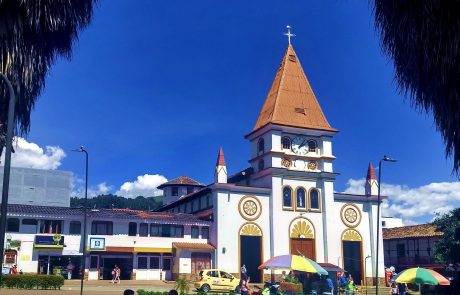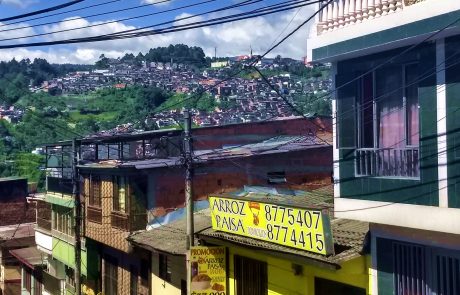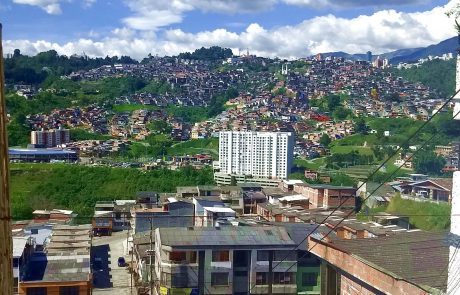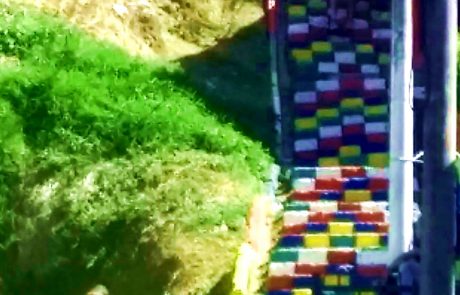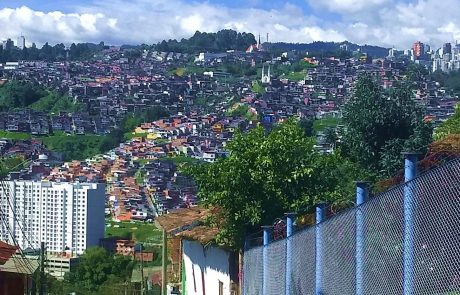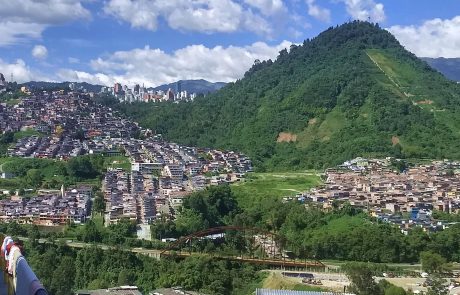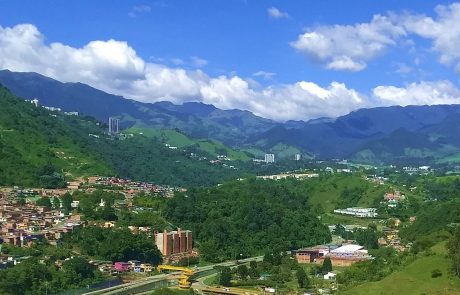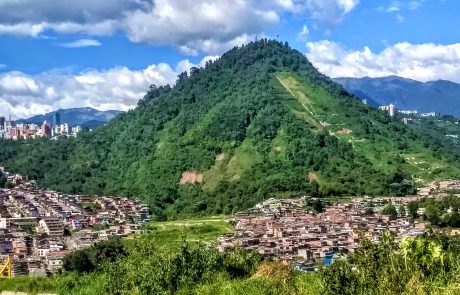July 2019
 Manizales is the capital of Caldas Department, to the north of Risaralda of which my current hangout, Pereira, is the capital. It’s only about an hour by bus or car and the road between Pereira and Manizales takes you right through the mountains. The scenery is amazing and kept my face glued to the window as the bus wound its way toward our destination. I regretted the inability to stop and take pics of the mountain landscape, but even if I’d been driving myself it would’ve been impossible because there’s no place to pull over. The highway was obviously expensive enough just getting the road itself punched through the mountains, forget about turnouts or rest stops and such like. Dang. So there are no pics to show of the journey, I’m sorry to say. You’ll just have to take my word for it that it’s stunning.
Manizales is the capital of Caldas Department, to the north of Risaralda of which my current hangout, Pereira, is the capital. It’s only about an hour by bus or car and the road between Pereira and Manizales takes you right through the mountains. The scenery is amazing and kept my face glued to the window as the bus wound its way toward our destination. I regretted the inability to stop and take pics of the mountain landscape, but even if I’d been driving myself it would’ve been impossible because there’s no place to pull over. The highway was obviously expensive enough just getting the road itself punched through the mountains, forget about turnouts or rest stops and such like. Dang. So there are no pics to show of the journey, I’m sorry to say. You’ll just have to take my word for it that it’s stunning.
I thought Pereira had lots of ups and downs and streets steep enough to make you break out in a sweat. Manizales says to that notion, “Honey, you ain’t seen nothin’ yet.”
What possessed the founders of Manizales to built a city on that particular site will forever remain a mystery to me. Had I surveyed the site myself back in the day (the day was October 12, 1849) I would have said, “Well, there’s a river — kind of small as rivers go — so there’s water, but OMG look at these hills, we’ll spend all our time just getting up and down them without breaking our necks. Is this really such a good idea??” Apparently I’m made of far less stern a stuff than the founders of Manizales. The hills left them nothing daunted. Since there is indeed a city there and it functions as well as anybody can expect a city to do, the founders obviously weren’t completely off base. Still, those hills …
When you come into Manizales from Pereira on the bus you end up at the Terminal de Transportes. Handily enough it counts among its many offerings a station of the cable car line that crosses the city. I didn’t get any pics of the trip through the mountains, but OH BOY do I have pics of Manizales itself, so let’s waste no time and get right to them, starting with the jaunt from the bus terminal to the city center, which lies at considerable elevation above the terminal. As an aside, Manizales is the only city in the coffee-growing region other than Medellin that has a cable car system to get from Point A to Point B within the city. That says something. What is says is : STEEP.
The first pic shows a map on the wall at the Terminal de Transportes — very handy! Manizales is perhaps the most spread-out city I’ve seen, I’ve been there twice and I still can’t tell what’s what as far as named areas of the city go. Since you’re forever going up or down it’s hard to keep track of your lateral motion — the gain or loss of elevation occupies your brain entirely so you lose sense of moving across space. I speak as a foreigner, of course, and I’ve just spent two years in a place as flat as a pancake, so it’s probably just me. I’m sure the denizens of Manizales have no trouble at all keeping themselves going in the right direction. I gained the impression it would take me about six months to get it all sorted out. That seems a steep toll on a poor old tourist like Yours Truly, but them’s the breaks.
The second pic shows a view from the terminal of the Nevado del Ruiz, one of the high mountains near Manizales that remains snow-covered all year long. It is, after all, in the Andes, more specifically in the Cordillera Central (central range) of the mountain chain, so some snow peaks are to be expected. I felt enormously lucky on my second trip to have perfectly clear weather for the day, something that happens rarely. As my travel companion and I headed in the taxi to our first destination the taxi driver said, “Look, you can see the mountain today, I haven’t seen it more than three times this year so far!” Obviously that good luck charm I bought in Filandia and rub between the palms of my hands every day is holding up its end of the bargain. 🙂
Before anybody gripes about picture quality in the shot from the cable car, let me hasten to say that it was taken through the plastic of the cable car window, so I did the best I could. It gives you an idea of what kind of terrain you’re dealing with in Manizales. Flat doesn’t figure in the scheme of things, as you can see.
Two stations up from the bus terminal finds you getting out at the station for the city center, perched up on top of one of the hills that form the city. I didn’t count them, but I can tell from the views that it has Rome with its seven hills beat hands down. No doubt there are those of you who love a throng and plunge headlong into a busy city center with glee. Good on ya. We’re not birds of a feather, however. The city center is among the oldest parts of town, of course, which comes as no surprise. The streets and the sidewalks are narrow with a capital N, since back in the day you didn’t need to build things any wider than was necessary to get two donkey carts past each other or two people walking on a sidewalk. Oh boy have those times changed. The city center is always thronged with people and walking the sidewalks could easily qualify in my book as an extreme sport. I can do it for about half an hour before I have to nip into a cafe and restore myself. Here are some pics:
Wash my expat mouth out with soap, but the ecclesiastical architecture of the city center lacks the wow factor IMHO. The church in the first pic is made of concrete, not stone, and the finish on the outside is quite rough where the workmen scraped the surface with some kind of tool but didn’t quite get to the smooth bit before they called it quits. It’s big, you gotta give it that, and it has a tower you can climb up if you want to get the view, but I took one look and kept on walking. The second church has a lovely plaza in front of it where I whiled away a few moments enjoying the hubbub from my perch in a shady spot on its margins, but I didn’t go into that one, either. I hereby delegate commentary and ooh-la-la-ing to somebody who musters more excitement than I. My problem must be old age (and too many visits to European cathedrals) since it’s too late in the day to ascribe it to the change of life. 🙂
As you can see from the street pics, we’re not talking the Avenue des Champs–Élysées. A modern sub-compact car is a bit wider than a donkey cart but you can still get two of them abreast on a city center street in Manizales with a bit of luck. If you were driving the kind of monster pickup so popular in my neck of the woods in the States, however, you’d be SOL from the get-go. The last pic shows one of the “pause that refreshes” cafes I enjoyed in the city center. It’s on the second floor so if you sit by the window you can nurse your macchiato and enjoy the bustle going on below you without the need to dodge the pedestrians. That’s the perfect combination in my book.
A bit uphill from the city center lies the area called Chipre. It’s a fashionable part of town and has lots of restaurants and bars. It also has stunning views because it’s perched on the edge of the hill that provides the city center its perch. There’s a big view tower (called a “mirador” in Spanish), which I neglected to ascend because I was content with the view from the ground level. See? I’m not really so tough a customer, after all. Chipre is the place to find the touristy things like the Museo del Cafe (Coffee Museum) and some typically melodramatic commemorative sculpture. I did go to the Coffee Museum and it’s well worth a visit. If you’ve gone to a coffee farm (“finca” in Spanish) before you hit the Museum, you’ll be disappointed because the spiel the guide gives will be old news. I haven’t done the finca thing yet so it was all news to me and I thought it very well done. There’s a cafe onsite in the museum, as well, offering freshly roasted local coffee. Scrummy!
As for the commemorative public sculpture, let me just say that Latin America goes over the top in that department and has every right to do so. We’re much more restrained in our public offerings in the States so it all seems a bit overwrought to me, but hey, I’m a foreigner so I should just keep my mouth shut. I’ll let the pics do the talking and you can form your own opinions. I’ll tell you one thing — if the hoorah you see going on in the sculpture scenes is what the founders of Manizales did in order to get things going there, I’m VERY glad it was them and not me doing it. Too much trouble by half from the look of it, that’s what I thought. When I saw the grouping with the wagon and the cow half falling down a hill I said to myself, “Maybe God didn’t mean for people to live here, kids, did you think of THAT?”
On my second trip to Manizales I went with a friend to the Recinto del Pensamiento (Haven of Thought). The name is excessively philosophical for a botanical garden, but there it is. Deal with it. It is, in fact, a botanical garden and an excellent one. There’s another one in town at the University of Caldas but I’ve not been there yet. It would have to be pretty good to beat out the competition from the Recinto. The Recinto is not a cheap date by Colombian standards (COP25,000 entrance fee, about USD $8.25) but worth every centavo. I have pics enough to keep you gawking for a good long while, so I’m going to have to be selective. It’s such a lovely place I’d be quite happy to fill the rest of the post with pics of it. Order must obtain, however, following that old German dictum (Ordnung muss sein), so I’ll stifle myself and present a cross-section of pics in their chronological sequence.
The walk through the garden takes about two hours and — of course — there’s a lot of ups and downs, so if you’re recovering from a hangover or have a bum ankle you can take the cable car to the top and spare yourself all the work. I was feeling hale and hearty the day I went so I hoofed it. I’m glad I did, too. After wending your way up through a patch of native forest you come to the Hummingbird House, where there are lots of sugar-water feeders out and plenty of the little dears flitting about gorging themselves. Our guide rattled off stats in an impressive manner. I was duly edified. None of that matters much unless you’re there, so I’ll spare you the math on the number of species in Colombia, etc. etc. You just want the pretty stuff, I know the type. 🙂 Here are some pics:
The next item on the tour is … wait for it … a bonsai garden. If you’re wondering (as I did) how the idea of a bonsai garden popped up in the middle of the Coffee Triangle, you can thank the Japanese government for the phenomenon. Apparently some philanthropic activity got a kick start when the garden was formed and the Japanese Embassy got in on the action. The result is a curious assemblage of bonsai specimens mounted on tables in a large, open field. I’ve not seen the like of it before. Crocodile tears will not roll if I never see the likes of it again. You may perhaps be horrified to know that I took not a single picture of the bonsais. I’ve always thought (and commented to that effect to the guide) that the Japanese are at war with nature just like the French of the Baroque period. A formal French garden of the Versailles type and a Japanese garden have quite a lot in common. The underlying aesthetic principle is to deform nature to human purposes so that it stands before you beaten into complete submission to the will of man.
We are not amused. A tree should be a tree, not a plaything for gardeners with too much time on their hands. Apart from the one snarky comment I did keep my mouth shut and listened patiently to the spiel, however, so at least I got a few karma stars out of the sorry business.
The landscape visible from the open field, on the other hand, is spectacular. I couldn’t sate my eyes on the sight of it. So while I’m bereft of bonsai pics, I have enough pics of the landscape surrounding the Recinto to do a separate blog post. The shape of the hills is so extraordinary and the range of the color green is extraordinary. Let me not tarry in bringing you the loveliness:
You only get hills shaped like that if the geological substrate is soft. Granite will not weather into sharp, quirky peaks, but dirt will. There’s a lot of talk about “derrumbes” (landslides) when heavy rain comes to the area. A look at some roadcuts and excavations soon made the reason clear. The mountains are mostly soil, not stone, so if the rain is torrential — as it can be here in this part of the world — it will send the slopes tumbling down with it as it rushes to the bottom. If I were a property owner in Manizales I’d have that fact uppermost in mind, but as a tourist I can simply take note and keep moving. I’m just after the pretty stuff. 🙂
The next stop on the tour is the Butterfly Sanctuary. There are plenty of butterflies flitting about, but the plants took the cake in my opinion. I’ll let the pics speak for themselves:
In my book that passion flower blossom has the butterflies beat hands down, but I was smart enough to keep my opinion to myself. I listened attentively to the guide and smiled. Again, I’ll spare you the stats. We just want the pretty stuff, don’t we.
A brief walk through another patch of native forest brings you to the orchid zone, which is in the forest, not separate in the manner of an orchidarium of the greenhouse variety. It’s lovely to see our epiphytic friends holding forth in their natural habitat. To repeat a fact I’ve mentioned in other posts, Colombia is Number One in the world for orchid species. I can’t say the display at the Recinto was gobsmacking, it’s apparently fairly new because many of the plants are small and still have identification tags hanging from them. All the same, it’s lovely to see them in the forest where they belong. Here are the pics:
The tree in the last pic brought me to a standstill for a spot of rapt adoration. The trunk is covered in Thunbergia, known in English as “clockvines” but in Spanish as “poet’s eye” (ojo de poeta). It’s a tropical number you only find indoors or in conservatories in the States but here in Colombia it grows all over the place. What a delight. The guide thought I’d twisted my ankle because I stood there so long gawking at the glory of it. I could have spent a good deal longer, but the show had to go on. And so it did.
The final stop of the day was the neighborhood of Villamaria. It’s an example of the urban assimilation that’s occurred as Manizales has spread itself across the landscape. Once its own proper town, Villamaria has kept its traditional town structure while being the last stop east on the cable car line that runs across the city. A special treat for me was a group of wax palms growing in the town square. The wax palm (Ceroxylon quindiuense) is the national tree of Colombia, although being a palm it’s of course not a tree at all in the botanical sense. But since we’re just after the pretty stuff we needn’t bother our pretty little heads with botanical niceties. Here’s a pic of wax palms holding forth in their native habitat.
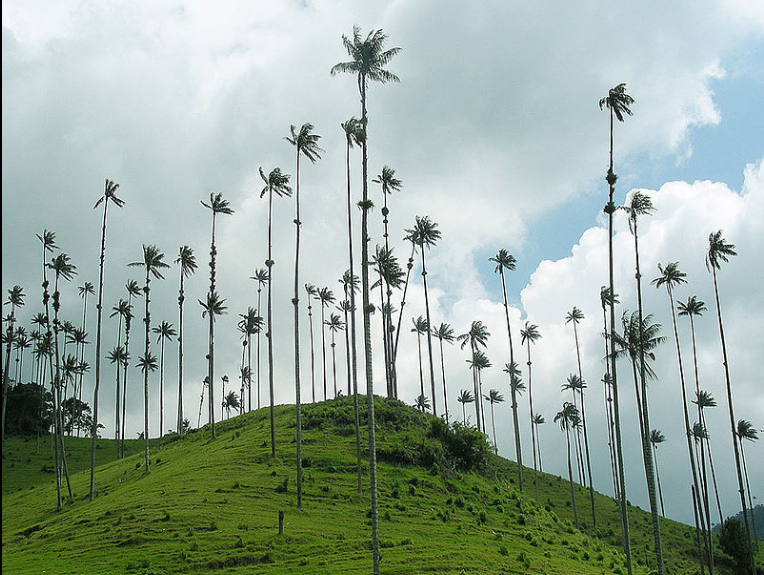
They grow to enormous heights and have the single tuft of leaves at the top. Bottle brushes to the gods, it would appear. They’re quite lovely things with smooth trunks and they lend an air of majesty to their environs. I thoroughly enjoyed hanging out with them in the town square of Villamaria.
Since I was in Villamaria on a Saturday things were hopping. That’s the lovely thing about Colombian towns on the weekends, people love to get out and hang out in public places — something we do very little of in my neck of the woods. Americans don’t have the public space tradition of Latin cultures so we don’t make a big deal of hanging out in town squares and sipping a cafecito while watching life go by. It’s a practice we’d do well to adopt, I think. It would make our social experience much more interesting, just as it does here in Colombia.
After getting the lay of the land in Villamaria I saw that the interaction of the town with the city that has engulfed it was foremost in my attention. The vistas from the streets near the town square show clearly how Manizales has spread like water backed up by a dam, filling in the valleys and leaving the hills to stand out bare like God made them (roughly speaking, of course, nothing in the vicinity is exactly as God made it, those days are long gone). My readership is modest to begin with and I doubt its quotient of civil engineers and urban sociologists mounts to a very high figure, so I’ll stifle myself with the commentary and get to the pics. Just the pretty stuff, RIGHT? 🙂
The last few pics show two different perspectives of the same spot. I include both of them to make the point that perspectives and vistas change so frequently as you move about Manizales it’s like looking at slides through an old View-Master with a nervous thumb on the advance bar. I’m dating myself here, I realize — View-Master? What’s a View-Master?? You youngsters can Google it LOL. Change your direction or move a few hundred feet and you’ve got yourself a different view of the city, sometimes radically different. It’s one of the things I most enjoy about the Coffee Triangle. The perspectives are always lovely and their changes bring a sense of newness to the landscape that hasn’t yet worn off for me even after a month of traipsing around looking at things a LOT.
I learned during a conversation with a local history buff that Manizales used to be the Big Deal in the Coffee Triangle. The department of Caldas dates from the 19th century and Manizales has always been the capital. For decades the inhabitants were the crème de la crème of the region because the departments of Risaralda and Quindio were created only in 1966. Pereira has grown rapidly and now holds the torch as the commercial capital of the Coffee Triangle. Manizales has become the Grande Dame and wears its history proudly. Its bent is more cultural and historical than commercial, unlike Pereira with its traffic and frantic pace that make abundantly clear there’s money to be made by those who hustle. Manizales has class and offers a kind of urban experience unlike any other city in the Coffee Triangle. It’s worthy of repeated visits to know the nooks and crannies and see all there is on offer. It’s a favorite with every inhabitant of Pereira I know. There’s good reason for that opinion, as I hope this report makes abundantly clear. If you’re in the Coffee Triangle Manizales should be on your must-do list. Don’t leave the region without a visit.





